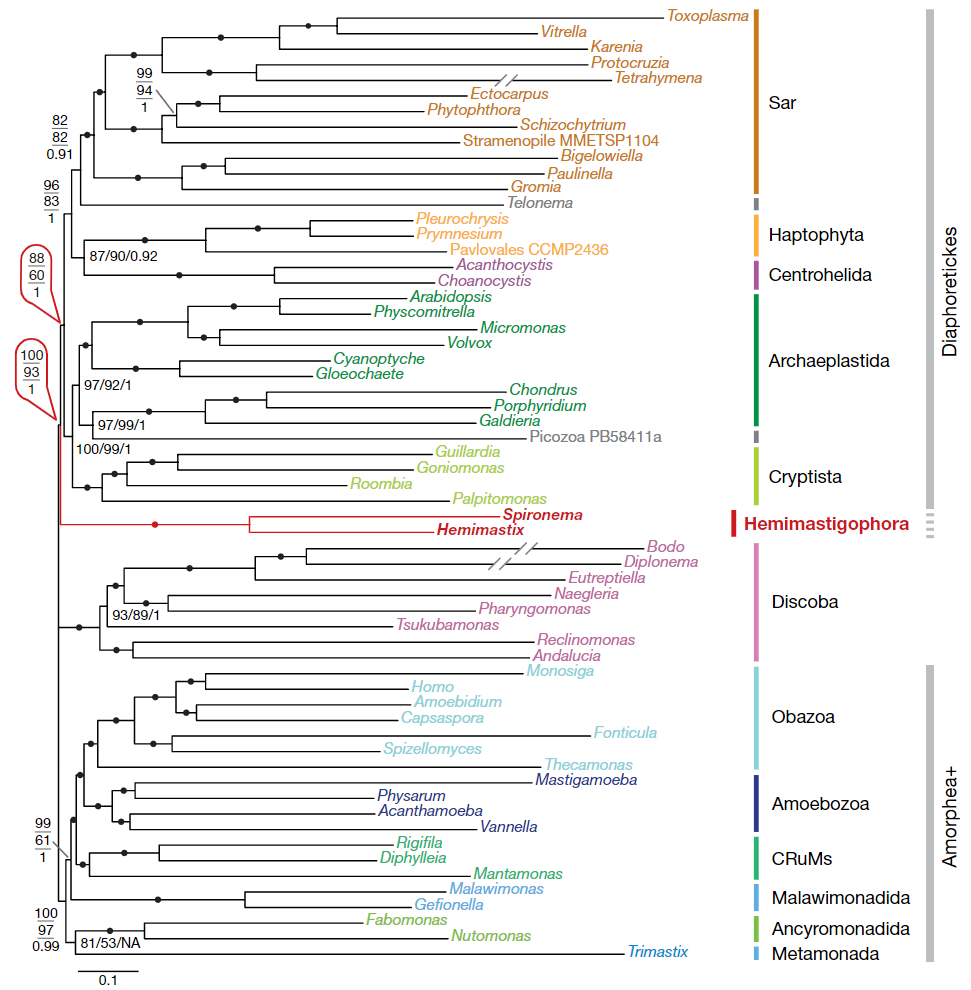The “kingdoms” of eukaryotes are plants, animals and fungi, right?
Apparently not. There are already between 5 and 8 super-kingdoms of Eukaryotes and a new one has just been found. Five to eight, don’t they know!
https://www.cbc.ca/news/technology/hemimastigotes-supra-kingdom
https://www.nature.com/articles/s41586-018-0708-8
“Canadian researchers have discovered a new kind of organism that’s so different from other living things that it doesn’t fit into the plant kingdom, the animal kingdom, or any other kingdom used to classify known organisms. A genetic analysis shows they’re more different from other organisms than animals and fungi are from each other, representing a completely new part of the tree of life, Eglit and her colleagues report this week in the journal Nature.”
The following chart gives the new tree of life, for Eukaryotes. I’m looking for plants, animals and fungi in here. Don’t see them.
Ah, plants are represented by Arabidopsis in superkingdom Archaeplastida. Animals are represented by Homo in superkingdom Abozoa. Fungi in … found it, in Spizellomyces, also in the superkingdom Abozoa.
This is so incredibly different to the classic three kingdoms of eukaryotes. (Shakes head in wonderment).
Just a few decades ago, all of these other than plants, animals and fungi would have been lumped into a single group of “protista”. The first breakup of protista into animal-like-protist and plant-like-protist didn’t occur until the year 1998.
